stanleythesteamroller
Member
- Messages
- 1
- Location
- Aldershot, UK
What have I done so far
What I still need to do
Question: I see people using Lecol 7500 and mixing it directly on the floor and then spreading it around the room with a very wide filling knife. Is this the best approach in my case, or is it possible to spot fill. I understand the time limit with Lecol, so maybe that is why its done across the whole floor in one go.
I know some may also comment on the tone of the slivers, and I know there is a big contrast in places, but I think this just adds to the character of the floor - thoughts?
Thanks again to everyone (and Toby) for contributing to the forum. It has given me hours of night-time reading.
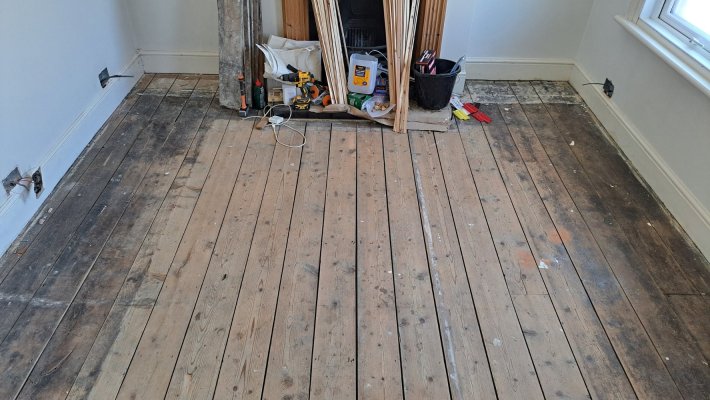

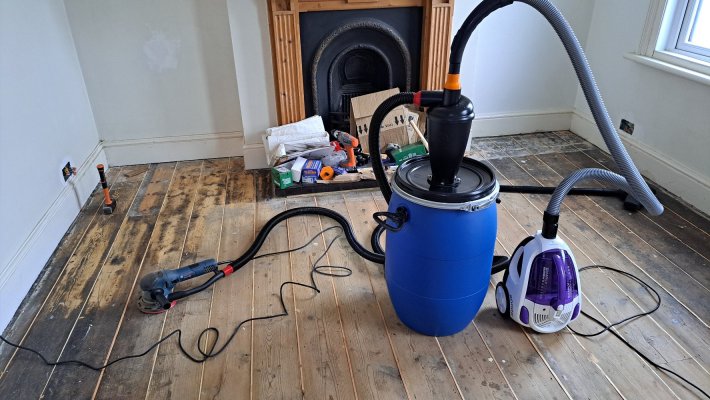
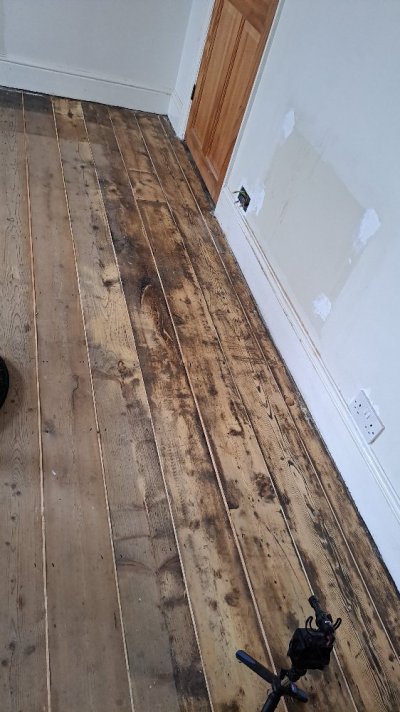
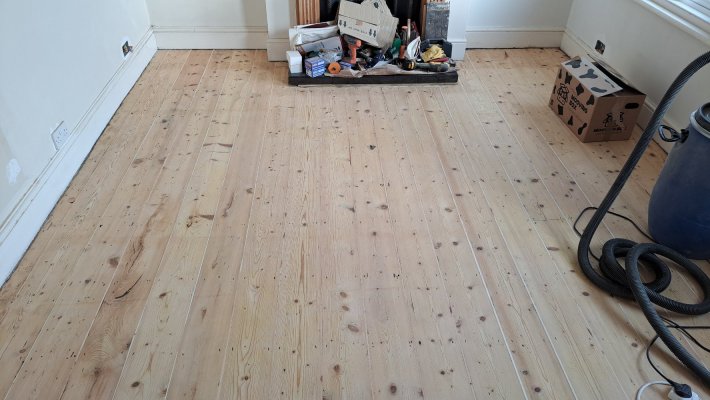
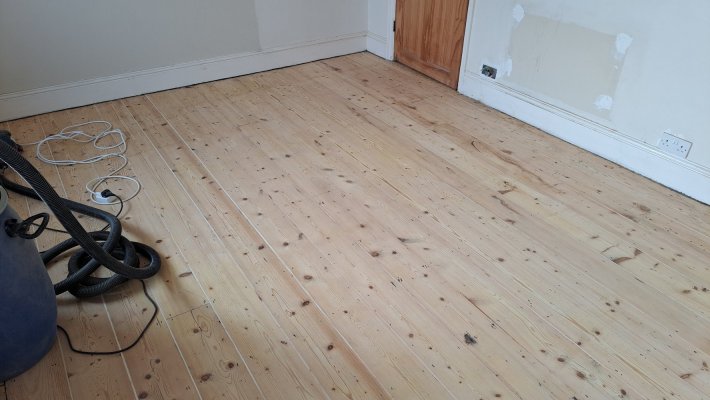
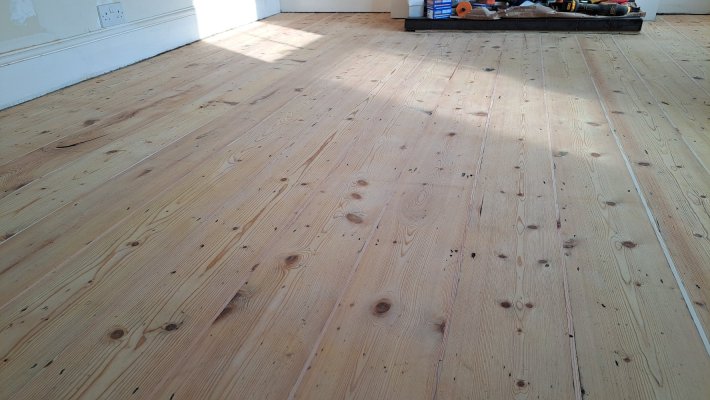
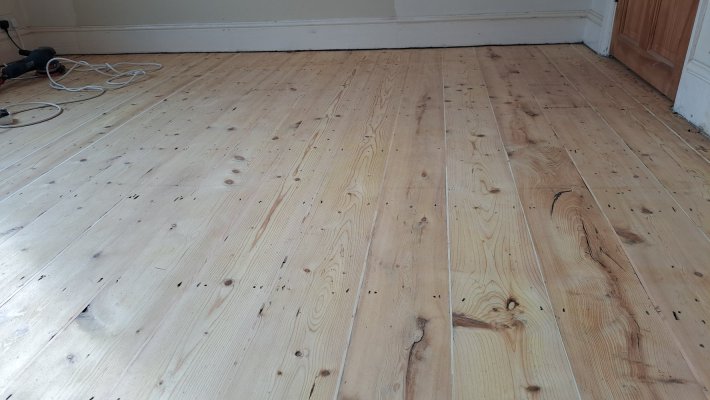
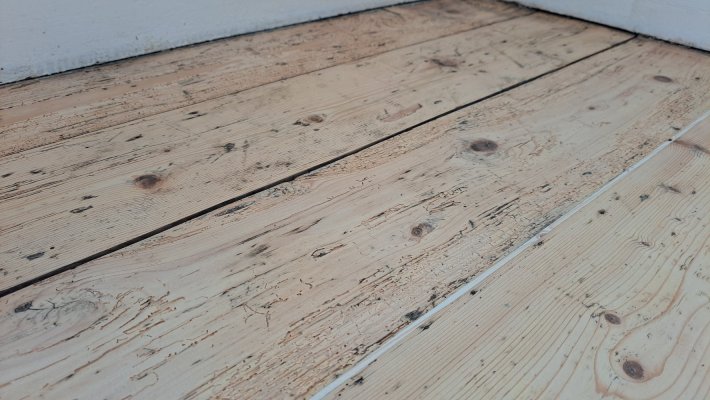
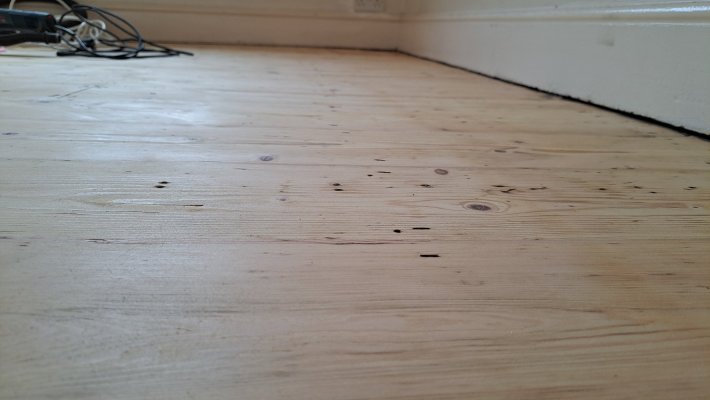
- Bought a 1896 Victorian semi-detected in Aldershot and decided to redo the master bedroom pine floorboards
- Fastened down some loose boards - replaced one small section that broke
- Removed hundred of tacks and nails
- Filled the gaps between the board with pine slivers I bought from eBay - D3 PVA glue and hammered home - Chiseled excess to a rough finish. You may notice that I have left one board without slivers, as I still intend to complete the plumbing for a radiator under the window and need this access. I also have larger headed screws for securing this board, as maybe someone may need access in the future... I will aim to complete the plumbing shortly before I do the final sanding and finishing.
- Made the decision to hand sand the floor. Reason being that I have lath and plaster ceiling directly below and there are hairline cracks already.
- Bought a Bosch GET75-150 orbital sander, started with 60 grit but quickly went out and bought 40 grit. I also pieced together a cyclone dust extractor hooked up to my 15 year old Russell Hobbs vaccum. It actually does a surprisingly good job at containing the dust, for a fraction of the cost of something commercial. I do also wear a mask.
- Completed roughly 3 to 4 passes with 40 grit - more on the edges where the staining was. I don't think this was bitumen but I could be wrong, it was a fairly thin layer.
- This is where I am today in the pictures.
What I still need to do
- More sanding, move up and do a few passes of a 60 and 80 grit - to collect sawdust, which may be needed if I go the Lecol 7500 route.
- Edge stripping / sanding
- Filling
- Morrells 2 component wood filler (pine or light oak or yew)
- or
- Lecol 7500 with 60 / 80 grit sawdust
Question: I see people using Lecol 7500 and mixing it directly on the floor and then spreading it around the room with a very wide filling knife. Is this the best approach in my case, or is it possible to spot fill. I understand the time limit with Lecol, so maybe that is why its done across the whole floor in one go.
- More sanding, after the filling I intend to move through the grits, 80, 100 and finally finish with a couple passes of 120. Potentially with another round of filling somewhere inbetween.
- Finishing, I am tying myself in knots over this one as I really don't want to screw this up. Generally, I really like the look of the floor so I dont want to change the colour drastically. I would potentially like to just enhance the grain (but then I'm also concerned maybe it will enhance other imperfections?) and then protect.
- I have poured over forums and Toby's literature and was thinking of the following
- 3 coats of Mylands shellac floor barrier seal - applied with a no.14 zorino polishing mop - I understand this may be all I need to give the floor that extra depth and enhance the grain?
- 2 coats of Junckers Strong Matt (MT500) - applied with a Hamilton Prestige laying off brush - I am not certain here as I feel my floor has undulations (not big by any means, but it is not marble flat) and I am speculative of using a roller...
I know some may also comment on the tone of the slivers, and I know there is a big contrast in places, but I think this just adds to the character of the floor - thoughts?
Thanks again to everyone (and Toby) for contributing to the forum. It has given me hours of night-time reading.










